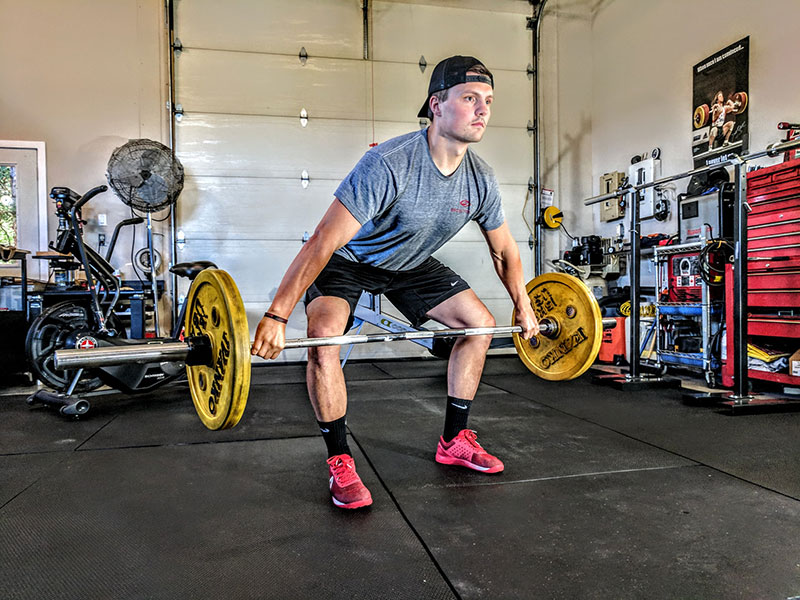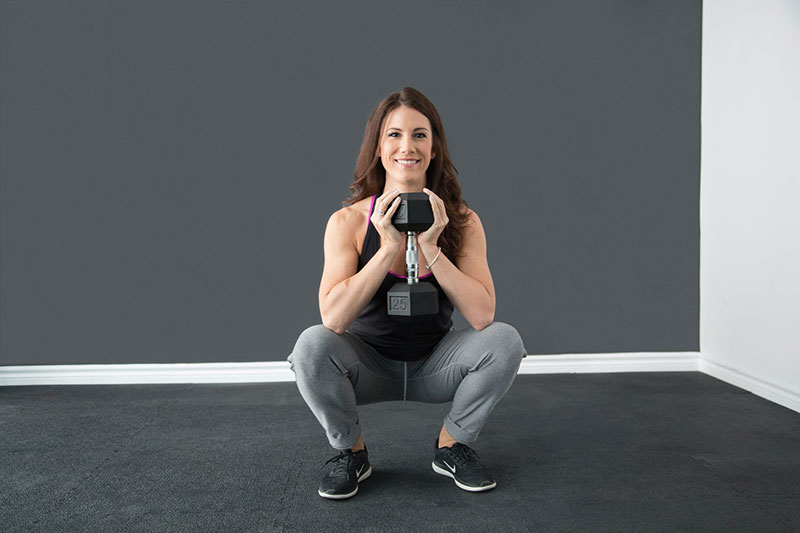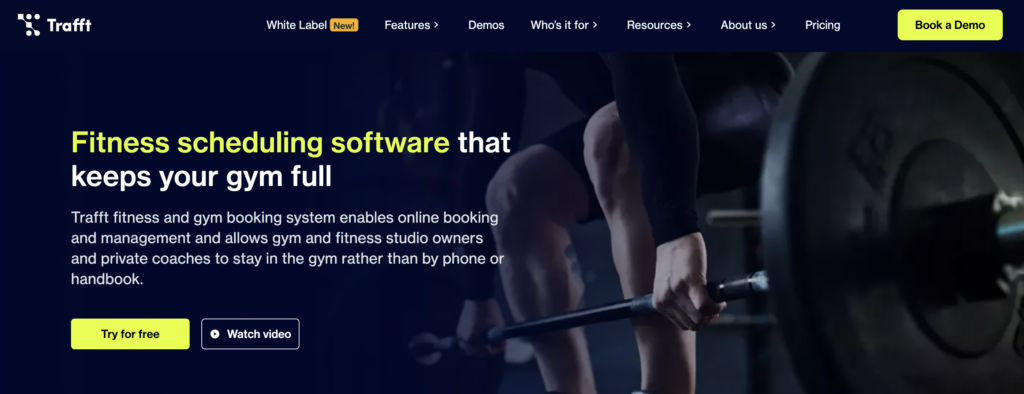Those who love working out and helping others achieve fitness goals will find personal training to be an ideal career choice. You might have already dabbled in this field as a hobby, perhaps by coaching others or creating your own fitness routine. But how to become a personal trainer and turn it into a successful career?
While there are multiple paths to the same destination, it’s easy to get lost. First of all, not all personal trainers are the same. Personal training is a diverse field with various specialties, approaches, and certifications. Understanding your niche and the specific population you want to work with is crucial. Are you interested in one-on-one training, group fitness, specialized populations like seniors or athletes, or perhaps just online coaching?
Once you’ve identified your niche, the next step is to acquire the necessary qualifications and certifications.
As there is a lot to cover, in this definite guide, we will dedicate a section to each of the steps needed to become a personal trainer. But let’s first be sure this is the right path for you.
Is Personal Training Right For You?

At first glance, personal training is an attractive career option, and it can be a great choice for you. As a certified personal trainer, you can help people reach goals in the field you’re passionate about. It’s a career path with a lot of flexibility and different options.
However, like any other career, being a coach has its own challenges. Remember to look both at the pros and cons before taking the leap.
Most importantly you need to ask yourself if you’re passionate about fitness. Having this drive will help you put in the work to make yourself a successful personal trainer.
There are some questions that can assist you while making a decision. Ask yourself:
- Do you enjoy improving your own workout routine?
- Do you often analyze other’s routines and forms?
- Do you enjoy working with others?
- Do you become thrilled when your workouts produce visible results?
- Do you enjoy researching forms to perfect every individual exercise in your routine?
If your answer is ‘yes’ to most (or maybe all) of these questions, you must have a real passion for fitness.
What Does a Personal Trainer Do?
In order to be sure this is a career path you should follow, you need to have a clear vision of what does a personal trainer do on a daily basis.
Main responsibilities
Trainers often work with clients in one-on-one settings. They educate and enable the client to exercise properly and meet their health goals in a safe and timely way. During the personal training program, the coach tracks the client’s progress and even creates customized meal plans.
No matter the program you create for your client, the end goal is to ensure they meet their fitness goals. A personal trainer will:
- Demonstrate exercise techniques and methods
- Observe their clients in order to correct their form
- Act as a general wellness coach backed by a strong foundation in scientific education.
- Design workout routines to match their clients’ individual health needs.
- Create customized meal plans while taking into consideration clients’ preferences and dietary restrictions.
Working hours
Even if you are a self-employed personal trainer, your schedule must revolve around your clients. Their needs and lifestyle will greatly determine when you can work.
Personal trainers rarely work the traditional 9-5 shift. Even when you are not having a training session, you’ll still be ‘on the clock’ because you’ll need to find new customers.
Marketing plays a key role, and you’ll frequently need to update your social media. By regularly publishing new content online, you can advertise your business constantly and, therefore, expand your clientele.
Benefits
Personal training is often seen as an exciting and uplifting career path. There are many enriching benefits from the work itself, the people involved, and the livelihood made.
Some other key benefits include:
- Fitness instructors can often set their own schedules, and if they are self-employed, they have the freedom to set their own rates as well.
- It is emotionally rewarding. Your client’s eyes will light up when they first feel the progress they’ve made. That progress is because of you, and the feeling of satisfaction it gives is unique.
- Variety and room for growth. Personal training is not a boring, repetitive job. The work is diverse, but it can also be the start of other endeavors. For example, many health writers began their careers as personal trainers.
- Relationships. The personal training industry is a very social one. Most of your time is spent with people, which will naturally result in new friendships and connections.
How to Become a Personal Trainer: Step-By-Step Protocol
Now that we have covered some basics about what being a personal trainer entails, you are either hesitant that this is the right choice for you or extremely eager to get started.
If you fall into the latter category, you are on a good path to making your dream job a reality. To make this transition easier, we created a protocol with simple-to-follow steps outlining everything you need.
1. Start learning
Not all personal trainers offer the same kind of service. Are you looking to become a nutritional-focused personal trainer, postnatal PT, or strength-focused coach? Depending on your preferences and future goals, the educational route can look quite different. Once you are familiar with all the different kinds of personal training and choose the one you want to pursue, the first step is learning. Many study programs can prepare you for what’s coming next and can even be attended online.
No matter the type of personal trainer you are looking to be, getting certified is a must. To pass the certification program, you’ll need to meet a few requirements first.
2. Meet the prerequisite

High School Diploma or GED
Most national certification organizations have the minimum requirement of a high school diploma. An equivalent, such as a General Education Diploma, is also accepted.
Additional education, such as certificates from training courses or even a formal degree, would be an advantage, though these are not required.
Any applicants must be 18 years or older to complete personal trainer certification.
CPR/AED Certification
Cardiopulmonary Resuscitation (CRP) and Automated External Defibrillator (AED) certifications are incredibly important. All reputable certifying agencies will require this.
The reason goes beyond personal training certifications. These skills are necessary for the safety of your future clients.
You will need to present proof of your CPR/AED qualifications before even signing up for the certification exam.
We recommend the American Heart Association or the American Red Cross. Both are popular and well-respected organizations to obtain the necessary knowledge.
3. Pass the certification exam
There is a variety of certifying agencies available that will offer exams. If your dream job is at a specific company, find out what exact certification they require or recognize.
Independent parties offer personal trainer certifications, but even though there are so many of them, only a few are widely recognized. Here are some we would recommend:
- National Academy of Sports Medicine (NASM)
- American Council on Exercise (ACE)
- American College of Sports Medicine (ACSM)
- National Federation of Professional Trainers (NFPT)
However, if you already have another institution in mind, a general rule is to check whether it has an NCCA accreditation. The National Commission for Certifying Agencies, or NCCA for short, is a government body that checks the quality of these institutions.
Personal training certification exams usually require you to apply ahead of time and pay a fee. You can expect it to be a 120-150 multiple choice question-style test using a computer.
It’s always a good idea to do a few mock-up exams, so here is an ACE practice exam for personal trainers.
Which certification is the best?
While this is a straightforward question, the answer isn’t that simple. Certification programs are not one size fits all. Each has pros and cons, and the final decision on which is the best will be highly subjective.
Each certification program focuses on different information, with an emphasis on aerobic exercise, general health, exercise technique, or behavioral change. So, the real question is, which certification is best for you?
It’s easy to get confused when researching all the various possible programs you can take. CPT, CEP, CSPS, and CIFT may all sound similar. The differences between them are also difficult to understand at first.
However, the good news is that personal trainers are not limited to just one certification. You may even want to qualify for more than one. Consider the kind of clients you hope to be training and look for certification programs that match their needs.
The best advice we can give you is to do the research. Look for answers to these questions from the certifying organization:
- Can the exam be taken online, or will it be an on-site test? If on-site, where and when?
- Is a workshop or seminar required? If so, where and when are these offered? Is there a home study option?
- What is the cost? Reputable certification exams can go up to $1,000. Sometimes, there will be additional expenses for study materials and workshops.
- How widely recognized is this certification? Nationally, internationally, or universally?
- What are the continuing education requirements for renewing the certificate? Most certifications must be kept up to date by completing continuing education hours. The investment of time and money is worth considering beforehand.
- Are there any additional prerequisites required? As discussed earlier, most will require a high school diploma or equivalent, CPR/AED certification, and a minimum age of 18.
Cost of Certification
According to NFPT, certification exams cost from $299-$600 before including any training materials. Textbooks, webinars, seminars, and classes can all be provided through a certification agency. The price for these extras begins around $200 but can run as high as $1,600 based on which agency and package you choose. Even though there is a high price tag, the extra material can help you better prepare for the actual exam. Additionally, this literature can help you greatly once you start working.
After passing the exam, there are also ongoing costs associated with maintaining your certification. You’ll be required to renew your credentials regularly, usually every 2-3 years, and pay a fee each time.
Personal training is one of those career paths that require continuous learning to renew your license and certification. With that being said, the whole process can cost up to $500 a year to upkeep everything.
4. Develop vital personal trainer skills

If everything went according to plan, we think congratulations are in order. Passing the exam made you a personal trainer on paper, which was your dream, right? But surely, the story doesn’t end there.
Developing the right attitude and skills is what makes you a personal trainer in reality and what sets you apart from the rest. Your internal confidence and passion will be visible outwardly to your potential clients. That kind of drive puts you a cut above other professional trainers. However, what other useful skills should you have?
Business-related skills
The personal training industry is fiercely competitive. Experience, education, and even personal trainer ability don’t guarantee success.
Business skills are just as important as your fitness training skills.
Marketing skills, social media presence, networking ability, and good business sense are key to a fruitful career. This is especially true if you are self-employed and have no one to rely on when it comes to getting new clients.
Leadership
You must display confidence, or your clientele won’t believe in you. They will also doubt the effectiveness of your personal training programs. Leadership skills are a must for personal trainers as there is a lot of resistance from the clients. This is completely normal, as working out is hard, and behavioral and lifestyle changes require a lot of work.
Remember that you are being paid for your expertise and must act like an expert. If you express uncertainty about what you’re teaching, you will quickly lose business. Certified trainers who lack confidence or leadership abilities are doomed to failure. If this is a skill that you don’t possess already, consider taking a class to develop it.
Organization & time management
The importance of organization cannot be overstated for fitness professionals. Client workouts, session tracking, and performance records are vital for every training program. Your client’s goals depend on you keeping track of the information. Data plays a big role in exercise science and gives you insight into what can be improved. Learn to manage it properly.
Maximizing profits requires skillful schedule management so that you never miss or are late for an appointment.
Communication & social skills

Listening skills are often a factor that differentiates a good personal trainer from an excellent one. Becoming a personal trainer means becoming a good communicator. You’ll hold meetings and presentations, write blogs, post on social media, and mail clients.
All fitness trainers know how to teach a squat or a plank, but that’s just not enough to build a thriving business. Trainers who create a good connection and rapport with their clients will develop a collection of loyal repeat customers.
Every client is different. Their personalities, backgrounds, and characteristics will be unique, so you must adapt to each of their personalities.
Learn how to have a conversation with anyone. If you do, you will be on a good path to creating meaningful connections with your clients. Good social skills will empower you and display confidence from the moment you meet potential members.
Nutrition
Exercise and nutrition are both fundamental to good health. Even if you have decided that nutrition will not be your main focus, having some knowledge of it is necessary. In order for your clients to meet their fitness goals, they’ll need training in both categories.
Therefore, personal trainers need to be educated in both fields if they want to retain a loyal clientele.
Be an example
Personal fitness training has to start at home. You must put into practice the healthy eating and exercise habits you promote to your clients.
To be a personal trainer, you must be a model fitness enthusiast. Your clients will not trust you otherwise. This is quite logical, as your physical health should be evidence that clients can reach their fitness goals with your help.
There is nothing more untrustworthy than an unhealthy personal trainer.
5. Consider specialization
Before delving further into the personal training industry, you may want to look at the bigger picture of your career path. Certified personal trainers can choose from many specializations. For every set of skills, personal interests, and professional goals, there are valid career options.
Do you envision yourself as a group fitness instructor? Weight management specialist? A master of exercise program design?
Once you have decided on your dream specialization, review the possible certifications and look for one that fits. Then, select the program that makes the most sense in light of your desired focus.
However, keep in mind that this isn’t something you need to plan before you dive into personal training. Feel free to start working with clients and see where you see yourself. The fitness industry is vast and includes an abundance of employment opportunities to consider.
Becoming a certified personal trainer can open doors to many adjacent fitness careers. You may soon find yourself practicing nutrition, sports medicine, or other exciting professions.
Here are some examples of the potential career specializations many trainers have considered.
Exercise physiologist
These specialists are educated on how stress from physical activity impacts the body. They analyze a client’s medical history and determine the best exercise regimen for their needs and goals.
Exercise physiologists work with people from all walks of life. These include world-class athletes and patients suffering from chronic diseases.
Sports nutritionist

These experts focus on nutrition. Specifically, they’re knowledgeable in how the body uses food to fuel physical exercise and everyday activities.
Their diverse array of clients rely on them to develop nutritionally sound meal plans, menus, and recipes.
Medical specialist
Many personal trainers continue their education to help with post-rehabilitation. They work alongside clients to recover from medical conditions, such as heart problems, muscle sprains, or orthopedic surgery.
A medical Exercise Specialist Certification from ACE is a good place to start if you see yourself in this field.
Group exercise instructor
These trainers lead groups of various sizes through personal training sessions. Group classes usually encompass a variety of activities. Yoga, aerobics, cycling, and Pilates are the norm. These instructors not only participate alongside other members, but they also play a vital role in motivating the group to keep going.
Special populations trainer
Special populations trainers are certified to work with clients who have certain medical or physical issues or are in a senior group. They help clients to maintain muscle mass and improve their general quality of life. These trainers are also educated to help younger kids reach age-appropriate goals and develop a love for fitness.
Strength and conditioning coach
These trainers are the go-to professionals to train athletes. They use their education and experience to enhance athletic performance. Besides training, these coaches play a vital role in rehabilitation from any sports-related injuries.
6. Find a job
Passing the personal trainer certification exam opens up a world of career opportunities. You now have the qualifications to fill a variety of job openings. To begin your search, check the online job database offered by a fitness association like NASM.
Personal trainers may be employed or contracted by fitness clubs or at a commercial gym. They could also train clients independently. Many new personal trainers start by working for a well-known business to get experience before branching out on their own.
Possible sources of employment

- Commercial Gyms: Big-name gyms such as XSport, 24 Hour Fitness, Gold’s Gym, and Planet Fitness are always on the lookout for new hires.
- Corporate Fitness: Many companies are built around providing wellness packages for businesses. These services aim to make businesses more productive by encouraging their employees to be healthy.
- Cruise Ships: Personal training is a common offering for cruise ship guests. Web research tools like Cruise Ship Job Finder are specifically designed to help you find these opportunities.
- Local Community Centers: These are ideal places to learn about clubs looking to hire personal trainers for their activities.
- Personal Training Studios: These organizations focus heavily on one-on-one lessons and small-group training.
- Spas and Resorts: Personal training classes are necessary for top-tier all-inclusive resorts.
Self-employment is the end goal for many personal trainers. But it could be your first goal if you’re confident in your business management skills.
Your business can be a sole proprietorship, a limited liability company (LLC), or a corporation. Study the pros and cons of these business models well so you can pick one that suits you.
Leverage the Right Tool and Skyrocket Your Personal Training Business

Want to start your personal training business on the right foot but find it hard to focus on everything? Introducing Trafft, the ultimate solution designed to help you manage your fitness sessions and optimize your schedule.
With this booking solution for personal trainers, your clients can now visit your booking website, see the services you are offering, and schedule the one they need, all without a single phone call. From client management to calendar synchronization and payment integrations with PayPal and Stripe, Trafft has everything you need to build a thriving business.
Are you tired of double bookings and clients missing their appointments? Leverage Trafft and say goodbye to both. With its automated reminders feature, Trafft will ensure your clients show up every time.
Ready to grow your personal training business? Visit Trafft’s sign-up page and see the difference it can make!
Ending Thoughts on How to Become a Personal Trainer
In this definite guide, we tried our best to cover everything that goes into becoming a personal trainer. Now it’s your time to act on your newfound knowledge.
Personal training offers flexibility, growth potential, and the satisfaction of making a tangible impact on clients’ lives. However, it’s also a career that demands dedication and continuous learning if you want to stay on top.
Remember that passing the exam doesn’t mean clients will line up to give you business. Whether you choose to be self-employed or want to start working in a gym, each route has its own challenges.
The good thing is that opportunities for personal trainers are nearly endless, and the demand grows every day. Sedentary lifestyles and obesity are making the personal training industry increasingly important.
But making a decent living is also a vital factor to have in mind. We suggest you read how much a personal trainer makes just so you know what to expect. And if you want to maximize your revenue, here’s a guide on how to start an online personal training business.
FAQ on How to Become A Personal Trainer
1. How to become a certified personal trainer?
If you want to become a certified personal trainer, the first step is to start preparing for a certification exam. This is a multiple-choice test that covers the basics of personal training. Many agencies offer various certificates, but be sure to choose the one accredited by the National Commission for Certifying Agencies.
2. How long does it take to become a personal trainer?
The certification process takes, on average, two to six months to complete. Many factors can impact this timeline, such as the amount of time you dedicate to studying and the program you enrolled in. All certification agencies have a test deadline, so if you are looking to become a personal trainer, you will need to put aside some time to study the material.
3. How much does it cost to become a certified personal trainer?
The cost of becoming a certified personal trainer typically ranges from $300 to $2,000. This includes fees for a certification test, study materials, and workshops. Additional costs may include renewing certifications every 2-3 years through continuing education.
4. How long does it take to become a personal trainer?
The time needed to become a personal trainer can vary greatly depending on many factors. Preparing for a certification exam can take several weeks up to a year. An individual’s prior knowledge of fitness, study habits, and the specific certification program chosen will determine how much time is spent completing this education.
5. How hard is it to become a personal trainer?
Becoming a personal trainer requires dedication and hard work, but it is achievable with proper preparation. The process involves studying anatomy, exercise techniques, nutrition and passing certification exams. Success also depends on practical skills such as communication, motivation, and business knowledge.
6. How to become a successful personal trainer?
The first step to becoming a successful personal trainer is to pass your certification exam. After this, you will need to find a job and develop other skills such as organization and time management, leadership skills, social skills, and business knowledge. Being successful in the field of personal training greatly depends on your dedication and genuine passion.



